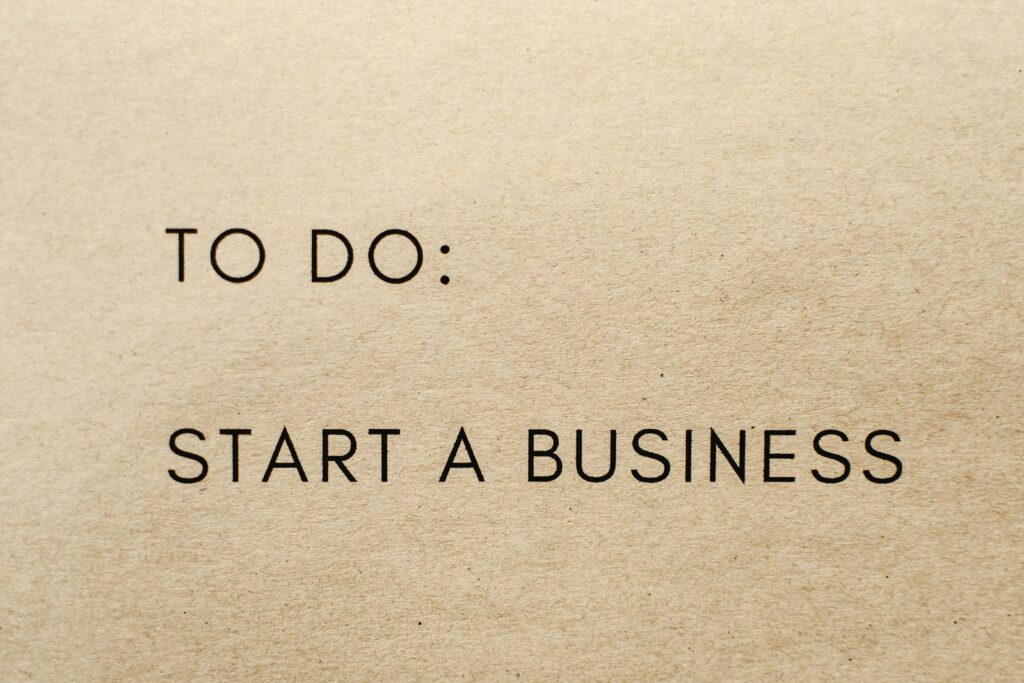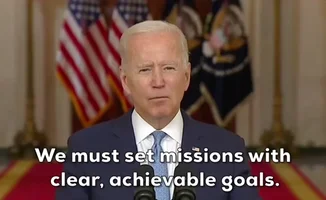When it comes to pursuing a meaningful life, one facet will inevitably take centre stage — goals.
From a young age, we are taught to set goals, yet we are rarely taught how to approach them in a strategic, conscious, and effective way. Too often, goals become a source of guilt, self-doubt, or even moral conflict when we either abandon them or fail to achieve them. Instead of serving as a guiding force, they can sometimes make us feel inferior or lost.
If you’re reading this, chances are you’ve set goals before — achieved some, fallen short on others. This is completely normal. Goals are a double-edged sword: they can either become a destructive way to live or serve as a powerful tool to shape a deeply meaningful and productive life. When approached effectively, goals act as a guiding framework toward a vision that is personal to you and the impact you want to create for yourself, the world, and those around you.
That said, living a profound and fulfilling life does not necessarily require setting official goals. Some people navigate life successfully without them. However, I recommend setting goals, simply to provide some form of direction and purpose. If you aspire to achieve big things, create, and be highly productive, then goals will be invaluable in your journey.

I’ve spent years setting ambitious goals and making significant progress — sometimes by achieving what I set out to do and other times by failing, only to grow in unexpected ways. Along the way, I’ve not only developed my character but also stumbled upon discoveries I never could have anticipated. Some goals remained out of reach, yet the pursuit itself led me to insights, opportunities, and experiences I never would have encountered otherwise. That’s the real magic of setting goals — not just reaching a specific destination, but embracing the mystery of where the journey takes you, the unexpected detours, and the new paths that unfold simply by moving forward.
Here is the secret about goals — goals are not about reaching one specific target and being done, it’s about getting you to wake up to the profound pursuits within reality and to learn to engage deeply with life in a process of excitement, growth, creativity and connection. That’s the fucking point. Deep engagement in a direction that is authentic and meaningful to you.

Principles For Mastering The Art of Setting and Achieving Goals
For those who want to set and accomplish powerful goals, understanding and applying key principles is essential. By following these principles, you will enhance your ability to ideate, plan, and execute effectively. Over time, this approach will lead to a more abundant, purposeful, and impactful existence.
Before studying the principles, contemplate on how powerful it can be for the scope of the next 5 decades of your life, to be able to be a master of goal setting and execution. This is massive.
Set Many Goals, Then Pick Priority Goals
Following this principle means sitting down for many hours and just writing down an enormous amount of things you may want to achieve in any given period. Get the juices flowing and allow anything and everything to pour out. This is not about the perfect goals, it’s just about getting a good sense of what you are interested in potentially pursuing. Allowing your mind to run free often allows you get through the superficial goals and creates more space for deeper more authentic goals to come up.
Once you have a variety of goals, the next step is to evaluate and prioritise them. Prioritising enables you to focus your energy and resources on what matters most. This clarity is essential for avoiding overwhelm and ensuring that your efforts yield the highest possible impact. Ultimately, you are going to want to set 100 goals, but realistically you will only be able to successfully achieve 10, especially if these are significant ventures.
So work on being decisive and pick those that are highest priority. The rest you can put in what I call the “Goal Archives” — a place to store goal ideas that you can come back to for when you are ready to take on more pursuits. This keeps your focus on what matters without having a list of 300 goals in one place.
Set Goals That Are Deeply Meaningful To You
Goals gain their power when they are rooted in your core values and passions. When your objectives resonate deeply with who you are, the pursuit becomes more than a task — it transforms life into a journey of authentic purpose, self-discovery and fulfilment. These meaningful goals provide intrinsic motivation that drives you even during challenging times.
Deeply personal goals are also more likely to be sustained over the long term because they reflect what you truly desire in life. They inspire persistence and encourage you to align your daily actions with your larger purpose, ultimately leading to a more satisfying and enriched life experience.
These days, we live in a culture that promotes goal setting for the sake of output and productivity. We have lost the art of setting goals that are authentic and relate to the genuine way in which we relate to life. Avoid the trap of getting lost in goals that represent the most productivity, the highest output, those that will impress other people and gain approval and those which pay the most money — this will not fulfil you in the long-term.
What am I passionate about? What are my top values in life? What impact do I want to have in this world?
These questions will create meaningful goals.
Break Goals Down Into Specific Short-Term Action Steps
Breaking down your goals into smaller, actionable steps is crucial for maintaining momentum. Large goals can feel overwhelming, but when you dissect them into manageable parts, each step becomes a clear, achievable milestone. This incremental approach creates a roadmap that guides you steadily towards your ultimate objective. It creates an exciting, incremental journey to look forward to, with pieces to craft and levels to move through.
Short-term action steps also allow you to measure progress along the way. By celebrating small wins, you build confidence and maintain motivation. This strategy not only reduces anxiety but also reinforces the idea that success is built one step at a time.
I break long-term goals into monthly sub-goals which can then be achieved by deciding on action steps to take each week and ultimately, per day. This also creates a much deeper focus on the present piece of your journey towards a goal, rather than just the final outcome (more on this in a later principle).
Have An Overarching Vision That Guides Your Goals
An overarching vision acts as the north star for all your goals and decisions. It provides a cohesive framework that unites diverse ambitions under a single, inspiring narrative. With a clear vision in mind, every goal you set becomes a stepping stone toward a larger, more impactful life direction. This is key.
This vision helps you stay focused during times of uncertainty and reminds you of the bigger picture. It encourages long-term thinking and strategic planning, ensuring that even as individual goals evolve, they all contribute to a broader, meaningful purpose.
Often people get caught in the trap of goal setting for goal setting’s sake. Life becomes a constant chasing of doing more, working more hours, achieving more goals and accumulating more and more life trophies. Whilst this is still a part of life, it is far more sustainable and meaningful when your goals are contributing towards crafting the highest vision you can imagine for your life — if you want to become a powerful self-actualiser, contemplate on the highest vision you can possible aim for and align all of your goals with this vision. Nothing will ever be the same.

Track Your Goals
Tracking your progress and action items is essential for turning aspirations into achievements. When you document your journey, you create a tangible record of your efforts and milestones. This practice not only offers insights into what works but also highlights areas where you can improve. It creates a healthy level of organisation and can give you a helpful perspective which helps you make better strategic decisions at each point in the journey.
Regularly reviewing your progress keeps you accountable and provides the motivation needed to keep moving forward. It transforms abstract ambitions into concrete outcomes, making the path to success clearer and more attainable.
Tracking goals is also very powerful because it allows you to put everything inside of your mind into a place that you can review and study, freeing up your mind for the rest of your day to day pursuits. No more having to remember every goal, sub-goal and idea for the future all at the same time!
One way note taking has particularly helped me with goals, is jotting down ideas for goals that I wish to pursue at a later stage. I put them in the future archives so that I don’t have to constantly keep it in the back of my mind. I can organise them, place them in different time frames, contemplate on their priority and relevance and track any research done for them.
Focus On The Path Towards A Goal More Than The Goal Itself
Everyone has heard the common saying “It’s about the journey not the destination”. Contemplate it deeply and you will realise how much more profound it is than you realised. Focusing on the process rather than solely on the end result shifts your attention to the journey — which is the only thing that actually exists! This mindset encourages continuous learning and growth, as you immerse yourself in the experiences and challenges that come with pursuing a goal.
A goal is a guide, the journey is your actual life — The actual experiences, growth, struggles, emotional moments, late hours, sweat, tears and your intertwining with reality itself. So head down and be present with where you actually are.
By appreciating the journey, you open yourself up to unexpected insights and serendipitous opportunities that can enrich your life in unforeseen ways. This approach helps you cultivate resilience and adaptability, making you more prepared for future challenges.
Rewrite Your Goals Out Often
Regularly rewriting your goals reinforces your commitment and keeps them fresh in your mind. This practice is not just about documentation — it’s a mental exercise that solidifies your intentions and renews your enthusiasm. I call it mind-grooving. By writing down your goals repeatedly, you create a living reminder of what you are working toward. Over and over again, you keep deepening your focus on what you care about. You write them everywhere, all the time, programming your subconscious little bit by little bit, until focusing on and working on your necessary action steps becomes normal.
I will often just write out a few of the current goals I am focusing on, to both remind myself as well as refine the current priority so as not to get overwhelmed thinking of the entire list of goals. It also keeps my mind fresh on my engagement with life and maintains excitement during each week. There’s nothing better than generating random excitement for life by contemplating all the ways you are engaging with it and the trajectory you are building for yourself. What else is there to do?
In addition to this, having your goals visible in various places further embeds them into your daily routine. This constant exposure ensures that your objectives remain a central part of your thought process, helping you stay focused and motivated as you navigate the complexities of life. Stick some of your goals on your fridge, on your bathroom mirror, on your desk and anywhere that you see often.
Goals Are About Becoming Not Doing
Reframing your perspective on goals from mere actions to states of being shifts the focus from achievement to transformation. Instead of seeing goals as tasks to complete, view them as pathways to becoming the person you aspire to be. You are becoming a new character, not remaining as the same character just doing different things. You are becoming a writer, not just writing a book or becoming a runner, not just running a marathon. If you want long-term results, consistently, then it’s more about identity shifting than just pure output.
This identity-based approach emphasises continuous self-improvement and personal growth. It encourages you to develop habits and mindsets that contribute to lasting change, ensuring that every action you take is aligned with the person you want to become.
If you have a once off goal, then it is also okay to just do your best to complete the task without having a full identity shift. This is more suitable for once off, short-term goals.
Be Strategically Adaptable
Flexibility is a cornerstone of successful goal-setting. Life is unpredictable, and the ability to adapt your strategies in response to new information or changing circumstances is invaluable. Strategic adaptability means being open to revising your approach or even your goals themselves, without losing sight of your core vision. In some cases, you might even feel the need to adjust your vision as well.
This principle is about balancing steadfast determination with the willingness to pivot. Embracing change as an integral part of the process allows you to overcome obstacles more effectively and ensures that your journey remains dynamic and responsive to real-world conditions.
A big trap of goal setting is feeling that you have to stick to a goal just because it was there from the beginning. This will cause a lot of unnecessary suffering. Do your best to accurately judge your life at every given point, and if you feel that a method, resource, sub-goal or even an entire goal is no longer suitable or in alignment with your vision, then let it go. This might feel like taking steps backward, but in the long run is much more constructive. Obviously do not confuse this with quitting just because something has become difficult and emotionally laborious. Learning to make this distinction is a sign of maturity and comes with experience.
Plan Extensively Before Pursuing Your Goal
This represents another element of powerful goal setting — strategic preparation. Extensive planning lays the groundwork for success by clarifying your vision and outlining the steps needed to achieve it. A well-thought-out plan minimises uncertainty and sets clear expectations for the journey ahead. It provides a structured approach that helps you allocate your resources wisely and anticipate potential challenges.
Detailed planning also serves as a roadmap, ensuring that you remain focused on what truly matters. By considering various scenarios and outlining contingency plans, you equip yourself with the foresight needed to navigate the complexities of your pursuit.
Ideas for planning out a goal before pursuing it include:
- All potential action steps required to achieve this goal
- Potential sacrifices required (this sets realistic expectations for the difficult elements of the journey)
- Resources required
- Planning out a time frame for the goal as well as the action steps

Strategically Allocate Concentration Of Force At Specific Times To One Goal
Concentrated effort at the right moments can accelerate your progress towards a goal. This principle is about strategically directing your energy and resources during critical periods when they can have the maximum impact. It involves recognising when to focus intensively on a particular objective and when to shift gears. This is particularly helpful when pursuing multiple goals.
I have a particular phrase in the world of my goals — the art of timing. It is so powerful to recognise the right time to push on certain things and the right time to focus on another thing. You can’t spend every day working on every single goal, depending on how many you have. There are periods, even times of the day to concentrate force on specific goals. Spend the time finding this balance with your goals.
This targeted approach not only boosts efficiency but also prevents burnout by ensuring that your efforts are balanced. By allocating your concentration thoughtfully, you can drive significant progress during key phases while maintaining overall momentum throughout your journey.
Embrace Failing At Reaching Goals
We can’t fall on our faces when we really, really try. We gain something just for the effort, no matter what the outcome.
Failure is an inevitable part of any ambitious journey, and embracing it can be one of your greatest strengths. Each setback provides valuable lessons that refine your strategies and strengthen your resilience. By viewing failure as an opportunity to learn rather than a definitive end, you create a growth mindset that propels you forward.
This acceptance of failure also reduces the fear of taking risks. When you understand that missteps are part of the process, you become more open to experimenting and pushing boundaries, which ultimately leads to more innovative solutions and personal breakthroughs.
Set big goals, push hard, fail at them, learn, refine your process, deepen your understanding of your deepest self, set more big goals and keep going until you have built a life more profound than you ever thought possible. Fail fast and learn. This is everything. Also, rather fail at audacious goals than achieve 100% success at goals that are safe, comfortable and out of alignment with who you are. Setting a goal, pursuing it and falling short includes all the progressions and incremental learnings along the way and all the insights you gained. It’s valuable no matter how it ends. Realise this and it will change your entire approach to goal setting.

Run Each Goal Through A List Of Questions
This is a powerful way to incorporate a lot of the above principles, thus ensuring that you are setting authentic goals, planning them out effectively and executing them. Running each goal through a list of questions — such as why it matters, how it aligns with your values, and what steps are necessary to achieve it — can provide clarity and direction. This process helps you identify potential obstacles and clarify your motivations. Asking powerful questions with your goals will help you become a more authentic and efficient goal master. It’s all about going in the right direction, being efficient at it and learning as much as you can along the way.
Here is a list of questions that you can start running your goals through, as a process to weed out the goals that are not appropriate and refine your list to goals that matter as well as then powerfully achieving them:
- Is this goal in alignment with my highest vision?
- Am I chasing this goal to fulfil someone else’s expectation?
- Is this goal a chasing of short-term temporary pleasure or a pursuit of long-term joy?
- Does this goal revolve around impressing others or gaining approval? Is that truly what will make me happiest?
- What are the top 10 action steps to take to ensure a higher chance of success for this goal? Can I break those each down into monthly, weekly and daily steps to lighten the load?
- What are potential obstacles that might surface in the journey towards this goal?
- How might this goal fail in the future and what can I make sure to do now to ensure that those situations do not happen?
- Does this goal currently require concentration of force to break through to the next level of progress? Would it be more strategic at this current point to sacrifice some time on other goals to make an extra push on this goal for a period of time?
- What are some limiting beliefs I have around this goal?
- In the case that a goal has failed — this goal has failed, but what is a list of all the ways since starting the pursuit of this goal that my character has grown? How many new people did I meet? What new insights did I gain? What new pieces of my life were born out of pursuing this goal?

Mastering the art of setting and achieving goals is not just about productivity or success — it’s about self-discovery, growth, and building a life that is truly yours. The pursuit of meaningful goals sharpens your character, expands your vision, and deepens your engagement with reality. Whether you reach every goal or fall short, the journey itself is where the transformation happens. Every failure, every unexpected detour, and every hard-earned victory contributes to the person you are becoming.
The ultimate power of goals is not in the destination but in their ability to pull you forward — toward mastery, toward a richer existence, and toward a life that resonates with your deepest values. It’s about designing a future you are excited to wake up to, one that reflects your highest aspirations. Set big goals, be strategic, embrace failure, and keep pushing. Not because you need to, but because the process itself is what makes life profound. In the end, goals are not just about what you do — they are about who you become.
What the fuck else is there to do? 😉
#27



